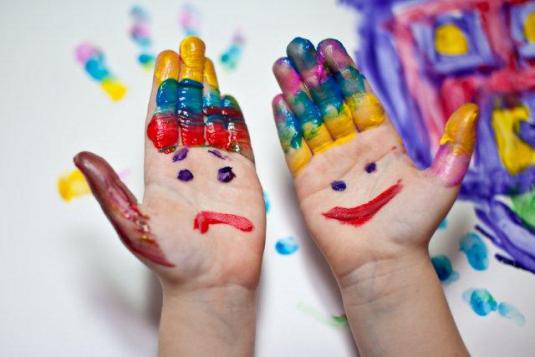Since the birth of her sister a few years ago, 6-year-old Jean* had been experiencing daytime and night time wetting almost daily, despite having been successfully toilet trained in the past. After consulting a physician to rule out medical causes and trying bedwetting alarms to no avail, Jean’s parents brought her to see me. I still remember the shock on her parents’ faces when after a thorough assessment, I suggested play therapy. Politely, they asked, “You are just going to play with my child?”

Source: https://www.universitysettlement.org/us/news/events/university_settlement_profession/
Play Therapy
Like Jean’s parents, many are baffled by the idea of play therapy but are reassured once they learn that it is much more than “just play”. In much the same way that talk therapy differs from regular talk, play therapy differs from regular play. Play therapy is a theoretically-based psychotherapy approach that uses play as a medium for understanding, communicating and helping clients, especially children overcome social, emotional, and behavioral problems (Association for Play Therapy, 2001). For over half a century, play therapy has been a popular form of child psychotherapy with vast empirical evidence over the past few decades to support its efficacy in treating a wide range of clinical and non-clinical issues (Reddy, Files-Hall, & Schaffer, 2005).
Why Play?
There are many reasons for using play in therapy and the fact that play is fun is just an added bonus! Most youngsters under the age of 11 have yet to fully develop their verbal language and/or abstract reasoning skills (Piaget, 1962), which makes verbal communication of complex issues, thoughts, and feelings difficult (Bratton, Ray, Rhine, & Jones, 2005). Play, on the other hand, is children’s natural language through which they readily express conscious and unconscious experiences that are otherwise hard to put into words (Axline, 1947; Landreth, 2002). In particular, the symbolic function of play provides a means for children to comfortably and safely communicate troubling events and experiences (Landreth & Bratton, 1999) such that they can “talk about” what is bothering them without really talking about it. For instance, while Jean avoided speaking about experiences of involuntary wetting with her parents, she expressed feelings of embarrassment, shame, and humiliation in our play by often announcing “to the world” with a toy microphone that I had just “peed or pooped my pants”! Play also provides opportunities for learning and promotes cognitive, social, emotional, language, and physical development (Piaget, 1962; Reddy et al., 2005). In the fantasy world of play, anything is possible; children can try out new roles and behaviors and develop knowledge that is both experiential and intellectual.
How Does Play Therapy Work?
“In play therapy toys are viewed as the child’s words and play as the child’s language–a language of activity” (Landreth & Bratton, 1999, p. 1). Children are often referred to play therapy to address problems. In the presence of an empathetic mental health professional who has been trained in play therapy, children can make use of the symbolic representation of toys to act out through play their inner experiences, bringing to life the problems that they struggle with. It is this process that allows the therapist to experience, understand, and actively work with those problems interactively with the child in the moment (Landreth & Bratton, 1999). Play enables children to distance from whatever that is troubling them, together with the understanding, acceptance, and support by the therapist, children are empowered in the process of play to consider new possibilities for their problems, providing them with opportunities to discover new solutions, learn adaptive ways of coping, and change the way they think or feel about problems. In Jean’s case, play therapy allowed her to play out her experience of being forced to grow up before she was ready and her wishes to remain as a baby. Over the course of play therapy, Jean eventually became ready to give up her wetting and to “grow into a big girl”.
Who And What Does Play Therapy Work For?
Developmentally speaking, play therapy is especially appropriate for children between 3 and 12 years old (Landreth, 2002). With that being said, it may benefit individuals of all ages and has been used with infants, toddlers, and adults in recent years. Play therapy has been shown by research to be an effective psychotherapy approach for a multitude of social, emotional, behavioral, learning, and life difficulties such as aggression, acting out, enuresis and encopresis, dissociation and schizophrenia, attachment difficulties, abuse and neglect, domestic violence, autism, chronic illness, divorce, death, relocation, etc. (Landreth & Bratton, 1999; Reddy et al., 2005) with moderate to large overall treatment effects (Bratton et al., 2005; LeBlanc & Ritchie, 1999).
If you are interested in scheduling a play therapy session with Dr. Natalie Loong or would like to learn more about play therapy, please contact us to find out more.
*To disguise the client’s identity, all identifying information presented here has been altered including the client’s name.
References
Association for Play Therapy. (2001, June). Play therapy. Association for Play Therapy Newsletter, 20, 20.
Axline, V. (1947). Play therapy. New York, NY: Ballantine Books.
Bratton, S., Ray, D., Rhine, T., & Jones, L. (2005). The efficacy of play therapy with children: A meta-analytic review of treatment outcomes. Professional Psychology: Research and Practice, 36, 376-390. doi:10.1037/0735-7028.36.4.376.
Landreth, G. (2002). Play therapy: The art of the relationship (2nd ed.). New York, NY: Brunner-Routledge.
Landreth, G., & Bratton, S. (1999). Play therapy. Retrieved from ERIC Digest. (EDO-CG-99-1)
LeBlanc, M., & Ritchie, M. (1999). Predictors of play therapy outcomes. International Journal of Play Therapy, 8, 19-34. doi:10.1037/h0089429
Piaget, J. (1962). Play, dreams, and imitation in childhood. (C. Gattegno, & F. M. Hodgson, Trans.). New York, NY: Norton & Co.
Reddy, L. A., Files-Hall, T. M., & Schaefer, C. E. (Eds.). (2005). Empirically based play interventions for children. doi:10.1037/11086-000.

